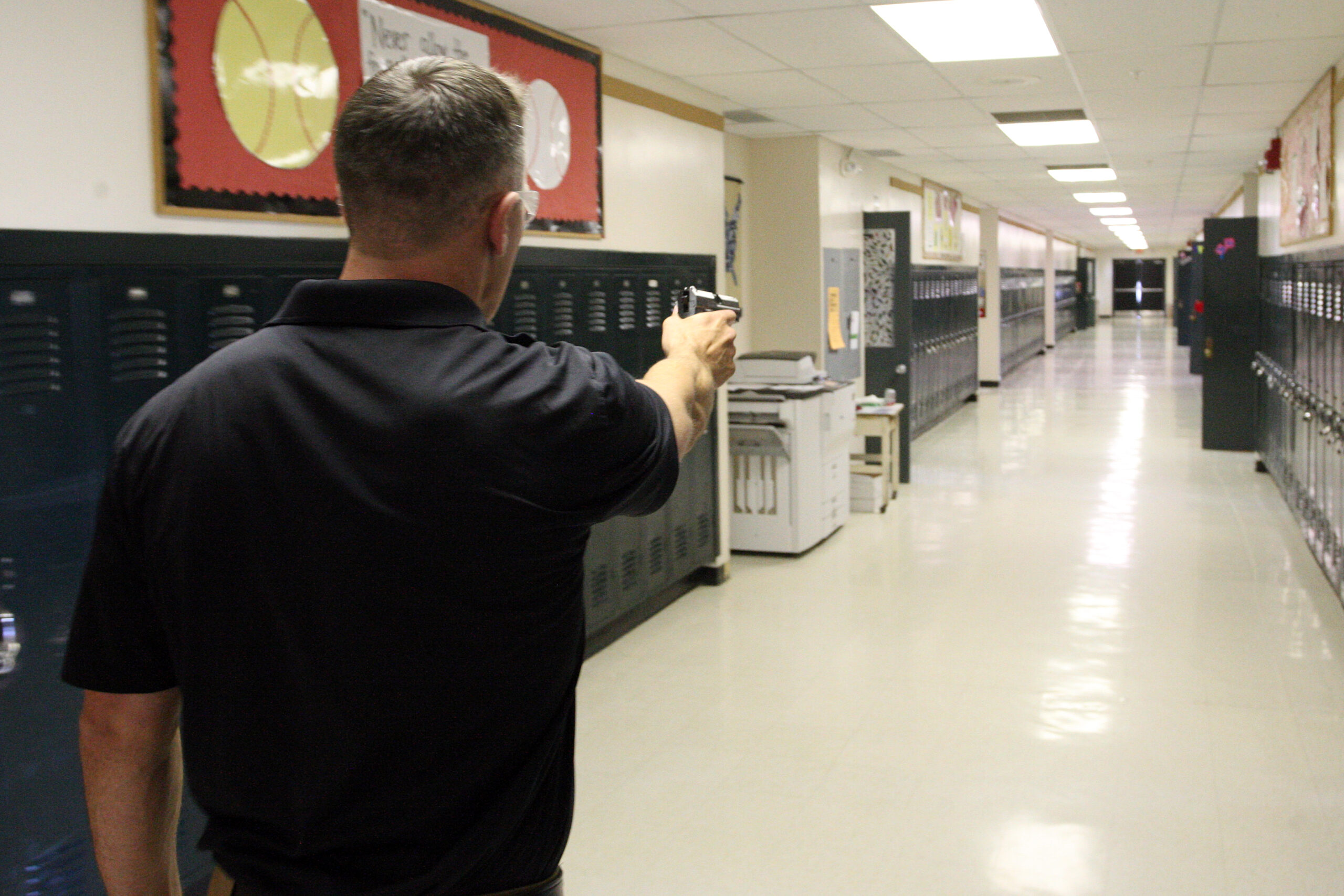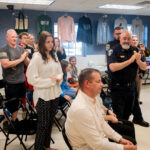
MARS HILL, Maine — More than 50 people gathered at Central Aroostook High School’s music room Tuesday night to learn about how they could mitigate the worst of an unlikely but potentially devastating school shooting.
After the Feb. 14 shooting that killed 17 people at a Parkland, Florida, high school, many students, parents and educators around the country have been wondering about whether such a violent incident could occur in their communities.
No mass shootings have happened in a Maine school, said Sgt. Josh Haines of the Maine State Police during the active shooter training.
“There’ve been a few plans that have been kind of foiled” and “the statistics are against us,” said Haines, who also has two students in the Mars Hill school system. “Without a doubt, there will be an active shooter in Maine at some point.”
In the last week, multiple students around the state have been found making alleged threats of violence at school. All of the schools in the Skowhegan-area school district were closed Wednesday after threats posted on social media. Students in Farmington and Thomaston were arrested Tuesday for allegedly making threats to shoot up middle schools in those areas.
Despite the recent threats and media attention, children are more likely to die from bicycle crashes and drowning than school shootings. Approximately 100 school-age children die each year in bike-related accidents, while on average about 10 students per year are killed by gunfire at school, according to researchers at Northeastern University. But many institutions are preparing for the worst-case scenario of being targeted by a shooter who could be armed with military-style or high-capacity guns.
“Active shooter incidents nationwide are increasing,” Haines said. Businesses are the the most frequent target and see about twice as many active shooter incidents as schools, Haines said.
Over the last few years, the sergeant said, the Maine State Police has been working to provide active shooter training to schools based on the ALICE model.
ALICE stands for alert, lockdown, inform, counter and evacuate and was developed by a Texas police offer following the 1999 Columbine High School shootings that killed 13 people in Colorado.
Columbine highlighted the flaws of the “old school” approach to school violence incidents “where we just basically hide in the corner and pray that the bad guy’s not going to make it through our door,” Haines said.
Of the 13 killed in Columbine, 10 were shot in a library where 52 students, two teachers and two librarians had tried to hide from the two shooters, Haines said. “During that whole time, they could have exited through a back door in the library.”
ALICE represents the “new school approach” to public shootings, Haines said. It’s less a step-by-step guide and more of a “proactive approach” that depends on the context, Haines said.
It boils down to: “We’re getting away from the threat. We’re doing whatever we have to do to save ourselves and save our students.”
Once an alert goes out or people realize there is an active shooter, the first goal should be to evacuate and get “out of the school by any means necessary as fast as you can,” including breaking through windows, Haines said.
If a group of people are confronted by a shooter, they can throw objects at him to disrupt his aim or swarm the shooter as a group.
“This is a last resort,” Haines said of swarming a shooter. “I would never tell any teacher this what you have to do.”
But if a gunman enters a room, multiple people tackling the shooter and grabbing the shooter’s arms can be “very effective,” Haines said. “That will eventually take the person down.”
In general, he said, school shooters confronted by challengers will often end the shooting and usually take their own life.
The swarming option should be left open, he said, because in many rural communities, a police response to a school shooting could take some time.
“The reality is in Mars Hill, Maine, unless there’s a trooper or a deputy sitting downtown doing some paperwork or whatever, it might be a little bit of a response time,” Haines said.
“Taking this proactive approach for students, staff and everyone who’s here is probably going to end it or save lives before we can even get here,” Haines said.
Other preparations schools can take include ensuring that all exterior doors are locked and that everyone enters through one entrance, Haines said. More schools are also adding interior locks on doors and sharing floor plans with police.
Haines did not hold any drills or exercises during his presentation Tuesday night to parents and community members at the school. He did previously provided the ALICE training — with drills — to school staffers in Mars Hill and also will be making age-appropriate presentations to students. The plan is to bring the presentation to schools around Aroostook County, Haines said.
Haines also urged community members to keep an eye out on their kids and youth in their community, and recommended the book Stop Teaching Our Kids to Kill : A Call to Action Against TV, Movie and Video Game Violence.
Elaine Boulier, superintendent of Maine School Administrative District 42 in Mars Hill, said the ALICE training has offered the district’s staff a good foundation for thinking about how to respond to an active shooter emergency.
The news coverage of the Florida shooting “brings the issue home,” even if it seems unlikely to happen in northern Maine. “You hope you never have to deal with it in your community. But you have to prepare for it,” Boulier said.
The superintentdent also praised the work of the Aroostook County Sheriff’s Office for landing a grant that helped every school district in Aroostook County purchase the COPsync software app, which allows school staff to use their smartphones to communicate with police in real time in emergencies.
In her 32 years working at the district, the last five as superintendent, Boulier said she has never seen a student who threatened some kind of school attack. But she said that more students today are dealing with issues such as anxiety and depression or poverty, addiction or trauma in their families.
Older, social media-savvy students also are well aware of the high-profile mass shooting incidents and debates over how to address gun violence, and that creates a balancing act for teachers.
“It’s a fine line discussing these issues with students because we want them to feel safe in their schools,” she said. “We don’t want to scare our students.”






